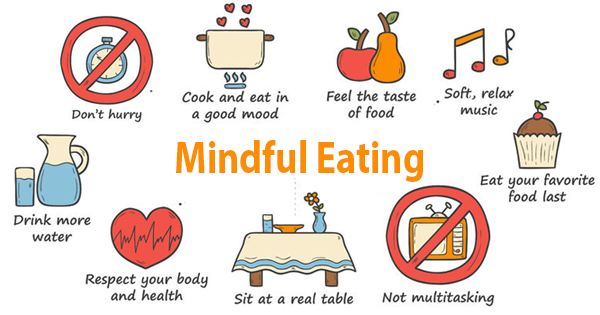Introduction
In today’s fast-moving world, many of us eat without thinking. We eat while scrolling our phones or watching TV. This disconnect from our food affects both our physical health and emotional well-being. The solution? Mindful eating. It means being fully present while eating. You notice each bite, savour the flavours, and listen to your body’s hunger and fullness signals.
This ancient concept aligns well with Indian traditions like eating with gratitude and respecting food as prasad or annadan. By learning to eat mindfully, we can improve digestion, manage weight, and build a peaceful relationship with food.
What Is Mindful Eating?
Mindful eating is the practice of eating with attention and intention. It encourages you to:
- Notice the colour, smell, and texture of your food
- Chew slowly and thoroughly
- Listen to your body when it says it’s full
- Avoid distractions like TV, phones, or multitasking
It is not a diet. It is not about restrictions. It is about being aware of what you eat and how it affects your body and emotions.
Why Mindful Eating Matters for Indians Today

1. Better Digestion and Gut Health
Eating slowly helps the body break down food more effectively. Chewing well also allows saliva and digestive juices to work better. This is useful in Indian diets, which often include fibre-rich dals, vegetables, and grains.
2. Weight Management Without Dieting
When you eat slowly, your brain gets time to signal fullness. This prevents overeating. Mindful eaters are less likely to snack unnecessarily, which supports healthy weight maintenance without crash diets.
3. Improves Emotional Health
We often eat due to emotions—stress, boredom, sadness. Mindful eating helps identify these patterns. Over time, it builds emotional intelligence and reduces binge eating.
4. Connects You with Indian Traditions
Indians have a long history of treating food with reverence. Sitting on the floor, eating with hands, offering food to deities—all promote awareness. Mindful eating brings us back to this spiritual connection.
Also Read Unlock the Power of Present Moment Awareness for Mindful Living in India
How to Start Mindful Eating: Simple Tips
1. Begin with One Meal a Day
You don’t need to change everything overnight. Choose one meal—like lunch or dinner—to practice mindful eating.
2. Pause Before You Start
Take a few deep breaths. Offer gratitude. Notice how hungry you feel on a scale from 1 to 10.
3. Eat Without Distractions
Turn off the TV. Keep your phone away. Focus only on your plate.
4. Chew Slowly and Thoroughly
Try chewing each bite 20–30 times. This not only improves digestion but also enhances taste.
5. Notice the Flavours
Indian food is rich in spices and textures. Appreciate the aroma of turmeric, the crunch of roasted peanuts, or the heat of green chilies.
6. Check in with Your Fullness
Midway through your meal, pause and ask: “Am I still hungry?” Try stopping when you’re about 80% full.
7. Eat in a Peaceful Setting
Avoid rushing or eating in crowded, noisy places. Make your dining space calm and tidy.
Benefits of Practicing Mindful Eating Daily
- Reduces emotional and stress eating
- Encourages balanced and nutritious food choices
- Promotes weight control without food guilt
- Improves concentration and clarity
- Builds a deep respect for food and the act of nourishment
Mindful Eating for Families and Children
You can involve your family in mindful eating. Teach children to eat slowly and without TV. Ask them to describe how the food tastes. Make it a fun and engaging experience. Over time, it becomes a lifelong healthy habit.
A Sample Daily Routine for Mindful Eating
Morning:
Begin the day with a simple, sattvic breakfast like fruits or poha. Sit peacefully and chew slowly.
Lunch:
Prepare a home-cooked thali. Include roti, sabzi, dal, rice, and curd. Eat in silence or with light conversation.
Dinner:
Keep it light and early. Avoid screens. Focus only on your food. End with warm water or a small cup of milk.
FAQs on Mindful Eating in India
Q1: Can mindful eating help with acidity or indigestion?
Yes. Eating slowly and chewing well helps the stomach function better, reducing gas, bloating, and acidity.
Q2: Is it possible to eat mindfully at work or school?
Yes. Even in a busy environment, take 5–10 minutes to focus only on eating. Avoid screens during that time.
Q3: Can I lose weight with mindful eating?
Mindful eating promotes natural portion control. You may lose weight without dieting because you’re eating only when hungry.
Q4: Does mindful eating require giving up fast food?
No. But it encourages you to be aware of how fast food makes you feel. Over time, your body may prefer cleaner, simpler foods.
Q5: What if I forget to eat mindfully sometimes?
That’s okay. Like any habit, it takes time. Just bring your attention back when you remember. Be kind to yourself.
Final Thoughts: Eat With Awareness, Live With Peace
Mindful eating is not about perfection. It is about presence. In a culture like India—where food holds emotional, spiritual, and social value—mindful eating brings deeper satisfaction. It connects you to your roots, your body, and your higher self.
You can start with one mindful meal today. With each bite, honour your body. Taste your food. Respect the process of eating. This simple change can lead to lifelong transformation.










